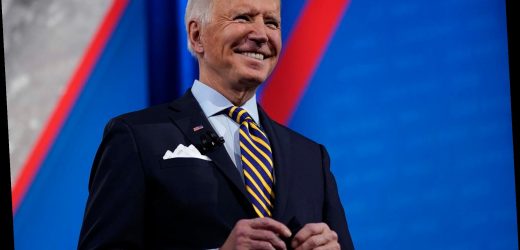More On:
Coronavirus
Former Detroit news anchor dies one day after receiving COVID-19 vaccine
De Blasio calls for commission to probe Cuomo nursing home scandal
Commentary across the spectrum is demanding schools reopen
People get death threats for dining indoors during the pandemic
The Biden administration will spend $1.6 billion to ramp up coronavirus testing and sequencing across the country — including $650 million for testing in K-8 schools, it announced Wednesday.
Speaking to reporters during a coronavirus briefing, officials said that while the administration was working to inoculate as many as possible, a “robust testing” operation was needed to further protect public health.
“We need to test broadly and rapidly to turn the tide of this pandemic. But we still don’t have enough testing and we don’t have enough testing in all the places it needs to be,” said White House COVID-19 supply coordinator Carole Johnson.
As part of the strategy, President Biden will sign a series of executive actions and orders authorizing the spending.
Through the Department of Health and Human Services and the Department of Defense, the federal government will spend $650 million of the funds for testing in elementary and middle schools, as well as homeless shelters.
The two agencies will also spend $815 million to boost the production of raw materials and testing supplies.
In addition, the Centers for Disease Control and Prevention will allocate $200 million to “identify, track, and mitigate emerging” variant strains of the virus through genome sequencing.
Biden has come under pressure to use his influence to get more kids back in school across the country, and said at a CNN town hall Tuesday night that he still aims to reopen the majority of K-8 schools by the end of April.
The CDC last week released guidelines saying schools can restart classes safely if they routinely screen for the virus.
Asked Wednesday about reopening in-person classes for all K-12 students — rather than just younger kids — CDC director Dr. Rochelle Walensky argued that it’s harder because teens are more likely to contract the virus.
“We need to test broadly and rapidly to turn the tide of this pandemic.”
White House COVID-19 supply coordinator Carole Johnson
“We know as children age, as they get closer to teenage years, that they act in this disease similar to adults. They are increased vectors in terms of transmission and that they are increasingly sicker compared to younger kids,” Walensky responded.
“So we have to be a little bit more cautious with our high school kids because they act differently from kids who are really young.”
Walensky argued that it was also harder to group older students together in small numbers than it was for younger grades.
“One of our key mitigation strategies is to try and have small cohorts of kids and it’s very hard to cohort high school kids,” she continued, noting that an authentic high school experience requires students to have different classes with a mix of students.
But, she noted, the CDC guidance “does have opportunities for high schools and middle schools to open if you can follow all of the mitigation strategies.”
Walensky added between this week and last, the number of schools currently in “red zones” for the virus — which come with stricter guidelines — decreased from 90 to 75 percent.
“The less community spread out there, the more we do to decrease the amount of disease in the community, there are well more opportunities for our children to get back to even in the middle and high school ranges,” she closed.
Dr. Anthony Fauci, the nation’s leading infectious diseases expert, said over the weekend that it would be “optimal” but not essential for all teachers to be vaccinated before returning to the classroom.
Earlier Wednesday, Vice President Kamala Harris repeatedly dodged questions about the CDC’s guidelines, saying it was the administration’s priority to get schools’ doors open.
Share this article:
Source: Read Full Article



